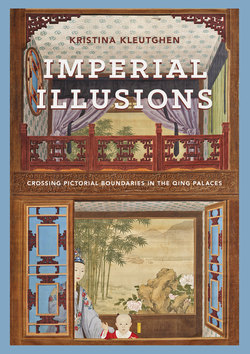Читать книгу Imperial Illusions - Kristina Kleutghen - Страница 42
На сайте Литреса книга снята с продажи.
Оглавлениеbeyond the multitude of artisans.”28 At worst, the comparison of a literatus, who painted as an amateur for his own enjoyment and self-cultivation, to a muralist available for hire equaled unparalleled disgrace. Yan Zhitui (531–after 591) recorded the mortification of three educated but not terribly high-ranking officials blessed with brush skills who were forced to paint murals in the Liang dynasty (502–57): “To find amusement in looking at the art objects of all times is particularly valuable and enjoyable. But, if one’s official position is not high enough, one is frequently ordered to paint for the government or for private friends, and that is disgusting service.”29 Regardless of how highly their superiors valued their skills, these men, as well as the sympathetic peer who recorded their embarrassment so acutely, were humiliated because they did not consider themselves and their skills available to command, especially not to paint such large public works that must have prioritized formlikeness.
Despite the presence and magnificence of Song illusionistic murals as seen in the tombs, this criticism only became stronger in the Northern Song dynasty. The famous Northern Song literatus Su Shi (1037–1101) was principally responsible for beginning the late imperial literati discourse of negatively characterizing both realistic and illusionistic paintings, as well as the professional artists who produced them. Despite acknowledging Wu Daozi’s unrivaled skill and unprecedented style, Su qualified the muralist’s talents only within the limited range of an artisan painter.30 The scholar and painting theorist Deng Chun (fl. 1127–67) noted in his treatise Painting, Continued (Hua ji, preface dated 1167) that even the Northern Song imperial academy painters were constrained by their professional training as well as their lack of self-cultivation: “the majority of artists, being limited by their personal characters, were bogged down in rules and techniques in their work and could not rise above the commonplace.”31 Developing their painting style in contrast to the naturalistic and meticulous court style,32 the literati community increasingly rejected the role that trained technique played in painting, which in turn affected responses to illusionistic murals.
From the Song dynasty onward, the fact that murals were found mostly in tombs and temples made them functional rather than self-expressive images, and therefore a much lower class of paintings. The muralists themselves could even be considered malevolent magicians for their skills at deceptive illusionism. Su Shi’s contemporary Guo Ruoxu (fl. 1070–75), the most influential art critic of his day, concluded his treatise Experiences in Painting (Tuhua jianwen zhi) with a vitriolic assault on “magic paintings” (shuhua). He abruptly assessed the sort of illusionistic murals that Duan Chengshi admired as the irrelevant products of sorcerers, liars, and evildoers before bluntly refusing to even record the appearance of any such works because they were not “artistic paintings” (yihua).33 When the character shu is translated as “magic” it has a supernaturally malevolent connotation, such as when it is a component of the words “witchcraft” and “sorcery” (wushu and yaoshu). Shu can also connote a skill, as in the term denoting “technique” as well as
